Dutch And The Malabar Coast
The Dutch landed at the Malabar Coast for spice trade 106 years after the advent of Vasco de Gama.
-
The Dutch landed at the Malabar Coast for spice trade 106 years after the advent of Vasco de Gama.

1604 November
The Dutch And The Malabar CoastWon't there be an end in sight of this sea....?
It is going to be nearly a year since the journey has started.
How long has it still to be awaited to catch sight of the seashore?
It had been months since they were hankering after to see the sandy seashores and the beings stomping around there and the sunlight filtering in through the green trees. Spreading the printed fabrics before them the navigators racked their brains. They took a firm pledge to stick on their resolution - either terrestrial exit or triumph. From the start of their voyage from the Netherlands in December 1603, the group of Dutch navigators have confronted many an impediment. How many times have they fought off sea-creatures and sea-rats? The fleet itself spun around many a time in heavy storms in the turbulent waters.
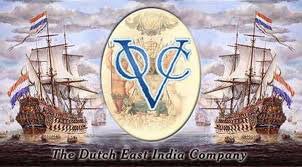
The Dutch East India Company Their escape from the hostile fleets of Spain and the Portuguese was miraculous. It is Malabar (Kerala) lying in the southern most India that triggers in them the enthusiasm to advance ahead enduring all the obstacles. It is the land of spices where pepper, corns, cinnamon, cloves, mace, nutmegs and all grow ripe in profusion. The main aim and intention of the voyage is to land there as fast as possible and reach agreements for the trade in spices with native rulers.
In 1581, Holland declared its independence from Spain and started the attempts to establish colonies. The Republic of United Netherlands granted freedom to the Dutch people to find out colonies. They became the most enterprising people in Europe prepared to live on the ocean with a piece of bread, salted meat and even salt water.
It was Captain Houtman who formed the United Dutch East India Company in 1595 to trade with India and later other trade companies came into being and amalgamating all of them on March 1602, the United Dutch East India Company was brought into being.
The Department of States General permitted them to make peace with eastern powers to erect forts, chose its own governor maintain garrison and nominate officers for the conduct of the police and the administration of justice.
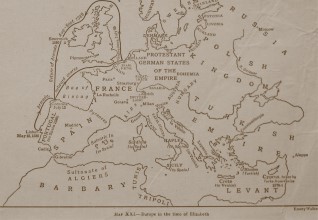
Europe in the time of Elizabeth The Fleet, captained by Admiral Steven Vander Haghen, now is on the move aiming towards Malabar under the auspices of the new Company. Two years prior to the formation of the United Dutch East India Company, Queen Elizabeth of England gave recognition to the English East India Company, but till 1802 hardly any representative of it had reached Malabar.
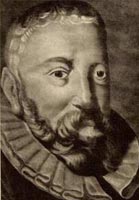
Captain Houtman It has been a centuries-old dream of the kings of the European countries to reach India and other eastern countries through sea-routes. Turk's capture of Constantinople in 1453, which closed the doors of trade to Europe, acting as the most important event, paved the way for it. The halt of spices from the South Indian territories to the markets of Europe through sea and land routes affected adversely the life and living of people there. This tempted the Europeans to find out a way to reach India, not through land route, but sea-route. While the European nations like Spain, Portugal, France and England gave help and encouragement to the navigators with this end in view, it was the first two that romped success.
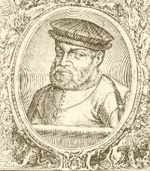
Admiral
Steven Vander HaghenChristopher Columbus and his group who stepped in to the sea with the aid of Spain to reach India, landed at last on an island by the eastern coast of North America which he believed until he breathed his last as it is "India". But as a matter of fact, it was Americo Vespucci who discovered America. It was the group of navigators headed by Vasco de Gama helped by Emmanuel, the king of Portugal who reached Kozhikode of Malabar in 1498, in south India rounding off the Cape of Good Hope. It took 317 days for this adventurous voyage. Becoming a new chapter in the history of world this event, linking the east and the west through the sea-route, turned out to be the major cause to the other historic events that took place in the world subsequently.

Christopher Columbus The Portuguese had the Malabar at their beck and call by means of taking sides with the local kings who engaged themselves in mutual fratricidal wars, trade agreements, erecting Fortresses and Factories and of raising mercenary forces. To the kings of Malabar who were accustomed to a warfare weaponry consisting of swords, shields, arrows, bows and spears, the Portuguese forces, being trained to modern techniques in the use of cannons and rifles, became a nightmare. They erected a big fortress in Cochin for the protection of factories and christened it as Fort Manual in honour of their king. It is the first fort, whose foundation stone was laid on 27 September 1503, that has ever been built by the Europeans in India. Later they built fortresses at different parts of Malabar including Fort Anjalo at Cannannore. They also seized maritime superiority from the Arabs replacing them from the trade they practised time after time. They murdered the maritime forces that opposed them at Malabar including its captain Kunjali Marakkar. Having taken roots in Malabar the Portuguese power started to spread different parts of India including Goa. But the people of Malabar, fed up with their misrule, turned against them owing mainly to their acts of corruption and religious fanaticism. A group of Dutch in the meanwhile from the Netherland set their foot in Malabar in the backdrop of such an environment of anti-Portuguese feeling sweeping through the land.
The arrival of the Dutch makes kings and traders including the Arabs happy.

1604 11 November
The Dutch and an Indian King sign the first trade agreementThe Dutch fleet anchored first by the extreme south of Malabar by the shores of Cannannore, also known as Kolathunadu (the land under the Raja of Kolathiri). A hundred and six years have passed now since the arrival of Vasco de Gama in Malabar. When he arrived, the big kingdoms in Kerala were the Kolathiri in the north, the Zamorin of Calicut close by it, Cochin at the centre and Venad at far south. Besides them there were numerous little Rajas and feudatories toowho were ruling in Kerala at that time.
The large kingdoms were at reciprocal wars to enlarge their territorial jurisdiction. It had been years since the Zamorin (the word 'Zamorin' stands for the common term for kingship) made attempts to become the 'Emperor of Kerala' conquering the whole of Malabar. Even a new Zamorin continued the attempt after the ascendency to the throne after the death of the reigning king. The Portuguese came over here when the Zamorin was waiting to become the emperor of Kerala after mounting attacks on the territories of the far south Venad (Travancore) and reigning in Kolathunad in the north and Cochin at the centre. He decided to reach trade agreement with the Portuguese thinking that through them he could materialise his aim. But belying the calculations of the Zamorin, the Portuguese, besides reaching trade agreement with Cochin, started to control the administration itself of it. Not only in Malabar located in the far north, but also in Kolathunad, the Portuguese broadened their trade arena by erecting fortresses.
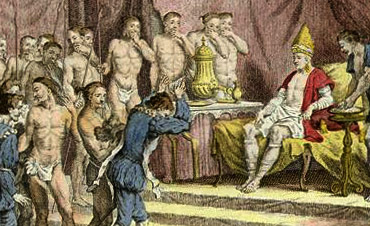
The arrival of Vasco de Gama in Malabar. When the Dutch landed in Malabar one hundred and six years after the arrival of the Portuguese, hatred for the latter was palpable among the local people and Rajas. The landing of navigators from Netherlands at Cannannore coming under the territorial jurisdiction of the local ruler Kolathiri was coincided with the Zamorin's engagement in warfare with the Portuguese at Kodungallor The local Rajas and the traders including the Arab merchants were in cloud nine with the advent of the Dutch in Kerala. The Arab merchants with promise of help called on the Dutch fleet, whose head being Admiral Steven van der Haghen, anchored at the coast of Cannannore. As the Dutch expressed their desire to see the Zamorin, the representatives of the latter called on them, a short while after, informing that he was on the battlefield engaging the Portuguese and promised that arrangements would be made to meet him at Kodungallor. Admiral became jubilant. In the meanwhile the Dutch started retaliating against the Portuguese aggression at the waters of Cannannore where a lot of people including the Raja of Kolathunad turned out at the shores to see the fierce fight between the two European powers. The natives came to know that the Dutch and the Portuguese were in possession of advanced arms. While the Dutch halted firing cannons paying heed to the request of Kolathunad that the shores of Cannannore should not be transformed in to a battlefield, the Portuguese too followed suit at last finding the odds were stacked against them. The Dutch went on their voyage to meet the Zamorin. On their way the Portuguese continued their attack and the Dutch continued to retaliate.

The Dutch group voyaging on the waters of the Arabian Sea, reached on the island of Cherruvay (Chettuva) where the Kodungalloor fort and port were located besides the encampment of the Zamorin.
Escorted by customs officials and armed guards wearing swords and guns, Admiral Van der Haghen landed ashore from the seas on 11 November 1604 while six Malayalis were kept in the Dutch ships as sureties. In honour of their Admiral's proposed meeting with the Zamorin, the bursting of cannon fire was being heard from the Dutch fleet continuously.
It was on the following day that the group of Dutch met the Zamorin. When the gifts were exchanged gun salutes emanated. On 11 November 1604, Admiral Haghen and the Zamorin signed a treaty, the first one of its kind signed between a ruling Indian prince and the Dutch on equal footing by both the sides. The Zamorin demanded, among other things, to the Dutch, by this Treaty that the Portuguese should be driven out, not only from the land of the Malayalis but also from the whole of India.
It was a period when throughout the world language, literature and science were growing in spurts.
Galileo, the scientist, continued his research.
In London, Shakespeare's dramas were enacted in front of live jam-packed audience.

1604
Changing world - KeralamThus the world witnessed new trade relations and the battles waged by the European powers that reached Asian-American continents to capture new countries through the sea-routes opened by Christopher Columbus and Vasco de Gama. While the spices taken from India made the Portuguese rich, the gold and silver from America made Spain the same making the other European nations jealous of them. The merchants of other European nations set about preparations for trade with eastern countries.

William Shakespeare During that period, language, literature and science flourished all over the world. In London Shakespear'e dramas were enacted before full-packed audience. Galileo, the scientist, continued his studies on stars and the universe through telescope. The priestly class was provoked by the new line of reasoning of science.
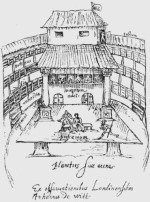
Shakespeare's Theatre His Majesty Akbar, the Great, was the emperor ruling most of the important places in India centred around Delhi, when Admiral Van der Haghen, being the head of the Dutch fleet, entered in to the first trade treaty with the Zamorin in 1604 at Kozhikode. In 1605 when Akbar died, his son Jahangir became the Mughal emperor. Queen Elizabeth, the contemporary of Akbar passed away in 1603 after which James-1 became the king of England. The English East India Company which was given recognition during the tenure of Elizabeth is now in preparation to trade with eastern countries including India.
The Zamorin expected that the Dutch would drive out the Portuguese not only from Malabar but from the whole of Indian subcontinent.

1604
The Zamorin attempts again to become the emperor of KeralaThe main responsibility of Admiral Van der Haghen who signed the first trade agreement with Zamorin representing the Dutch government was to liberate Kerala from the clutches of the Portuguese. The Zamorin had many expectations on the Dutch in this regard.
What gave the Zamorin the expectation was the fact that the Dutch was also in possession of advanced war weaponry and trained warriors on a scale at par with the Portuguese. Even though he was mentioned as the emperor of Malabar in trade treaties, the reality was that the Zamorin, who had been pining for 'the emperor of Kerala' could not materialise that aim with the arrival, first of the Portuguese and then Dutch at the Malabar Coast. Furthermore, it was unlikely that his pining would materialise in near future, since the existing political environment was totally against him. On one side there was the more powerful Portuguese and the principalities which had in the palm of their hand; the other principalities trying to be powerful were quite unwilling to accept the suzerainty of the Zamorin.
The Zamorin was able to snatch away for himself from Valluvakkonathiri the presidentship of Mamankam the assemblage of the erudite held on the banks of the sacred river Bharathapuzha once in every twelve years where all the kings of Kerala took part. Then he became the virtual president of the Mamankom. While all the kings of Kerala send flags at this assemblage as a mark of respect Valluvakkonathiri sent suicide squads which fought off the soldiers of the Zamorin on the banks of the river. But never did were suicide squads able to defeat the Zamorin forces. Thus with the arrival of the Dutch, the Zamorin, who was already enjoying the presidentship of the Mamankam, had his pining to become the emperor of Kerala enhanced.
Kerala's war weaponry, arrows, bows, spears and elephants gave way to guns, cannons and horses.
With the arrival of the Dutch the number of the European powers in Kerala became two. There took place great changes in the politico-social-commercial domains during the course of one hundred and six year period that elapsed between the arrival of the Portuguese and the trade treaty entered in to with the Zamorin by Vander Haghen, the Dutch Admiral. With the advancement of the Portuguese, the commercial relations of Kerala extended to Europe helping to get higher prices for the trade goods. Along with it goods and things of Europe started to be circulated in Kerala. The Portuguese constructed their churches and palaces following their own mode of architecture which finally helped to spread the European mode of architecture in Kerala. It was in war arena that big changes took place. The kings of Kerala were accustomed to a warfare where arrows, spears, elephants and infantry were freely used. With the arrival of the Portuguese, the kings found that the guns, cannons and horses were more powerful than that of their weaponry and hence they started to make guns, besides imparting training to their soldiers.
The Seminaries instituted by the Portuguese for religious instruction became instrumental in establishing Malayalam's contact with Portuguese-Latin languages. It was the Portuguese who brought to Kerala the agricultural crops including cashew-nut, custard, guava, pine-apple, papaya and tobacco. But the religious policies of the Portuguese and the schisms emanated from them and the corruption of the officials made people contemptuous of and hateful to them. The Dutch's arrival here was coincided with the fury of all the mutually hostile kings of Kerala towards the Portuguese.
The political conditions in Kerala during arrival of the Dutch were almost the same as when the Portuguese had arrived in. Even in that period too, there were only four important kings with their feudatories co-existing side by side with a series of minor principalities.